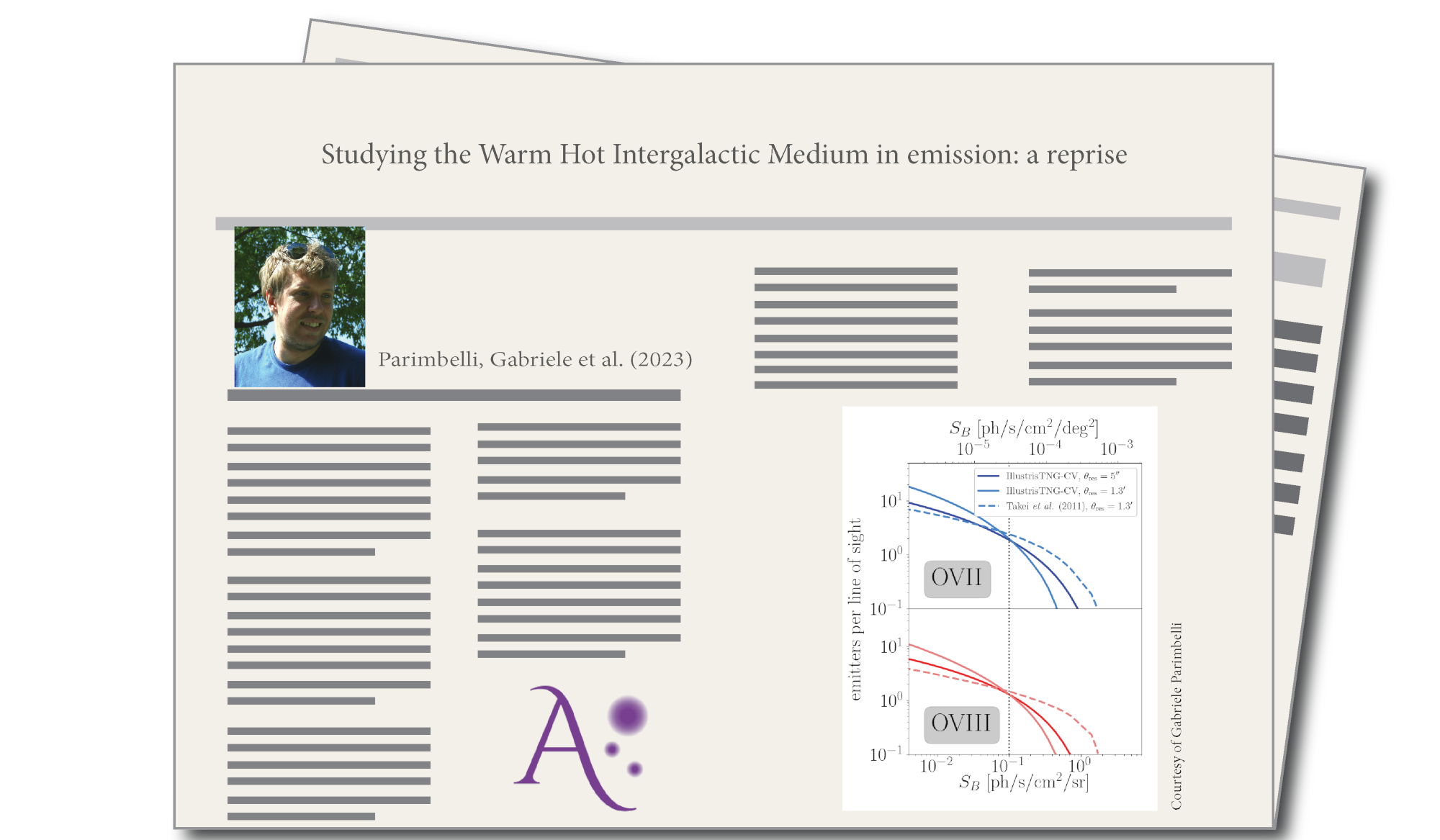
Studying the Warm Hot Intergalactic Medium in emission: a reprise

Caption: The figure shows the expected number of OVII (upper panel) and OVIII (lower panel) emitters per line of sight above a given surface brightness, as obtained by a spectrometer with the same specifics of the X-IFU instrument, i.e. an energetic resolution of 2.5 eV and an angular resolution of 5 arcsec. We also show the impact that a smaller angular resolution (1.3 arcmin) has on these statistics (lighter lines) and compare our predictions with Takei et al., 2011 (dashed lines). The vertical dotted line marks the minimum X-IFU sensitivity for a 3-σ detection.
By Gabriele Parimbelli,
A significant fraction of the “missing baryons” is expected to reside in the so-called Warm-Hot Inter-galactic Medium (WHIM), for which to date only a few detections in absorption have been obtained. The advent of next-generation integral-field spectrometers, like the X-IFU instrument on board Athena will allow the systematic WHIM detection both in absorption and emission and, for the first time, the study of its physical and statistical properties.
In our work, we use the CAMELS simulation suite to model surface brightness maps of OVII and OVIII ion emission lines, measuring pixel number counts and clustering properties through two-point correlation functions, also in cross-correlation with the halo field. Thanks to the wide parameter space explored by the simulations, we are able to investigate the sensitivity of such quantities on cosmological parameters and astrophysical processes like Active Galactic Nuclei feedback and supernova activity. This approach allows us to separate the cosmological aspects from the baryonic processes and place constraints on the latter.
By assuming a spectrometer with performances similar to X-IFU in angular and energy resolution, we also provide approximate yet quantitative forecasts on the detection of WHIM emission lines per pixel, together with emission profiles around halos up to a few tens of arcminutes, i.e. scales larger than that of a typical WHIM emitter. Overall, we predict the detection of 1–3 WHIM emission lines per pixel. Our work demonstrates the potential of emission studies in probing the densest and hottest phase of the WHIM and shows possible ways to extract cosmological or astrophysical information on the baryonic processes at play.

